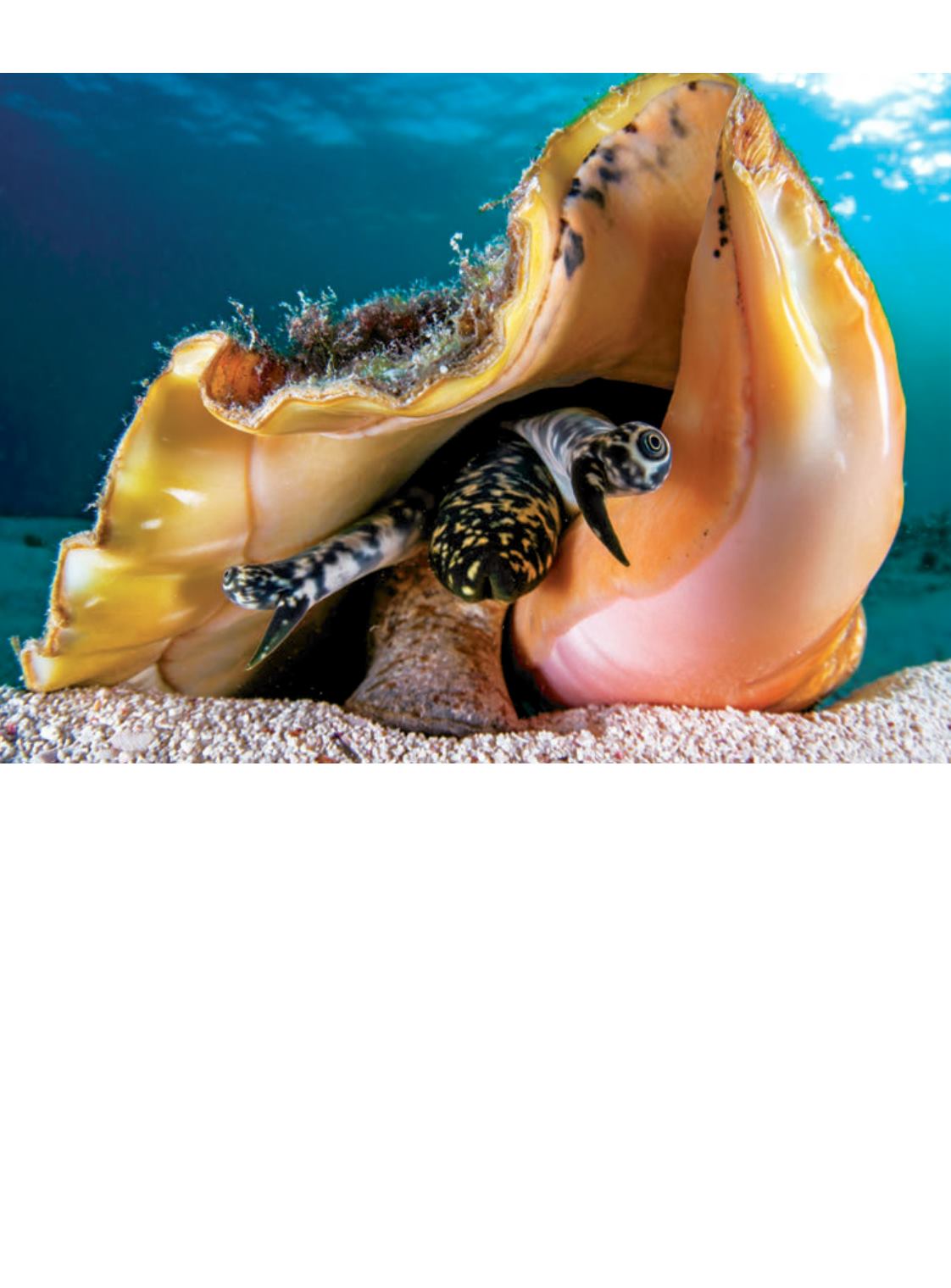
 ALERTDIVER.COM
ALERTDIVER.COM
|
43
the national food of the Bahamas and is considered a
must-try for visitors. It is typically served either raw in
a salad with citrus juices, fruits and veggies or fried as
fritters or “cracked conch.”
Usually the shells are discarded onto massive piles
called middens, but they may also be used to make
jewelry, Christmas ornaments and other trinkets. The
shells are used extensively — they decorate walkways,
they’re built into cement walls, they appear as table
ornaments and much more.
I was particularly enamored of a massive brass
sculpture of a conch shell I saw on a billionaire’s
private property. The individual’s economic status
seems not to matter; the conch shell is a symbol of
the Bahamas and its clear water, cool breezes and
relaxed atmosphere.
As a dive instructor and guide, I am careful to not
touch the animals, but conch are one of the few I will
pick up, turn over and give guests a peek at. I encourage
them to feel the smooth underside of the shell before
I place it back in its environment. Conch are beautiful
to look at, touch, taste and even hear (there are many
popular Bahamian songs written about conch, such as
“Conch Ain’t Got No Bone”). I haven’t met anyone,
however, who enjoys the raw smell of conch.
CONCH IN TROUBLE
Two major queen conch fisheries (Florida and
Bermuda) collapsed in the 1970s and despite complete
moratoriums have still not recovered. “If the conch
fishery in the Bahamas is lost, it’s lost forever,” said
Agnessa Lundy, marine science officer at the Bahamas
National Trust. In 1992 conch were listed in Appendix II
of the Convention on International Trade in Endangered
Species of Wild Fauna and Flora (CITES) because nearly
all Caribbean nations’ conch were severely overfished in
the 1980s. Today only a few countries have significant
enough populations to allow for commercial export.
Community Conch, a nonprofit conservation
organization, along with the Shedd Aquarium in


















